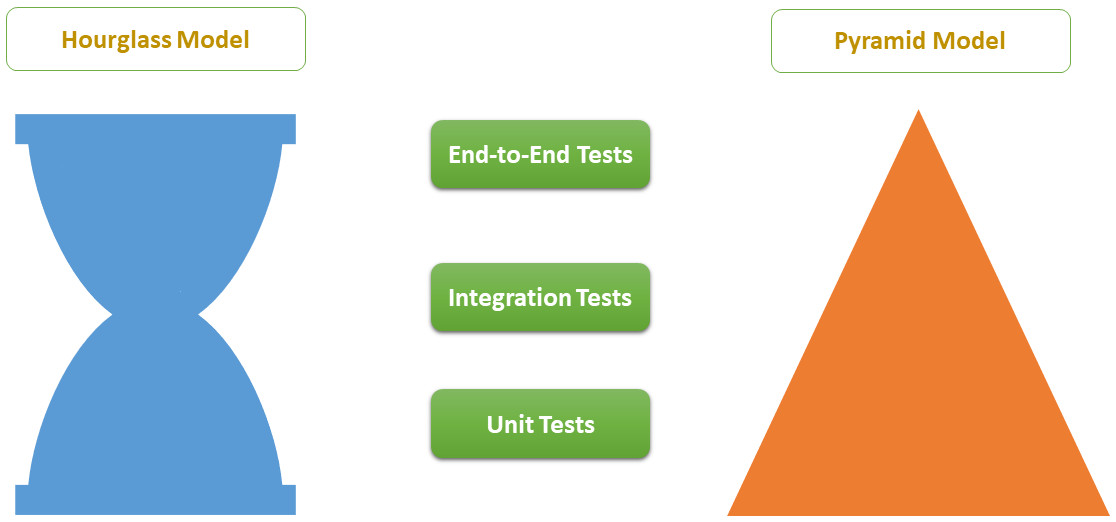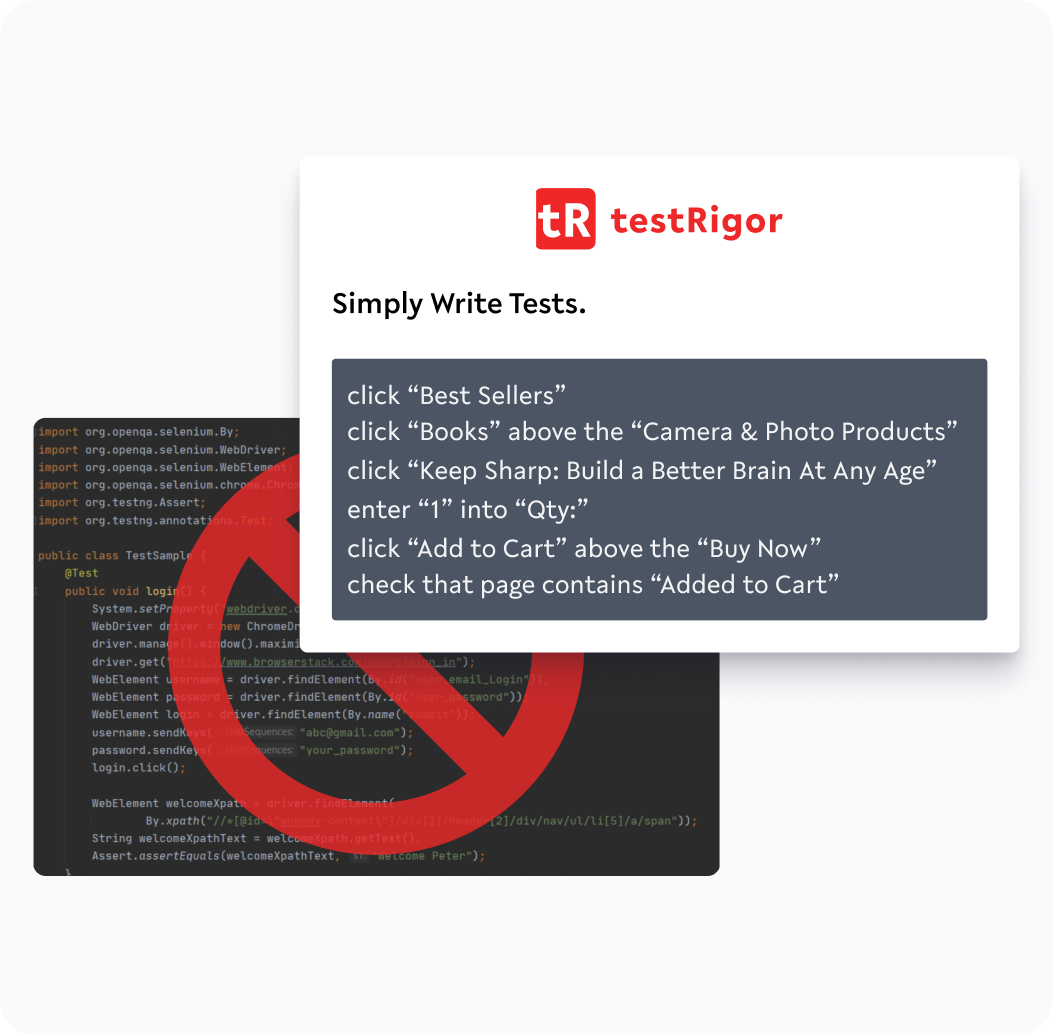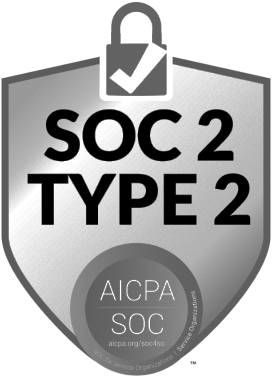End-to-end Testing
A Comprehensive Guide
What is End-to-end Testing?
End-to-end Testing Definition
In the Software Development Life Cycle, End-to-End testing is the best way to exercise all levels of the application under test, as it covers a wide spectrum of user scenarios. Every test case is from the end-user’s perspective and hence, makes for rigorous validating of the functionality of the software application. In short, the E2E approach tests multiple paths of the application, which the end-user may follow while using that application.
The inclusion of End-to-End testing can be a game-changer in strong relationship building with your customers. The approach has become more of a necessity than having it as a lower-tier option in your test suite. It also provides a great benefit for evaluating the performance of the application under different test conditions.
On top of that, the subject methodology can test data with the live settings replicated. This helps business, testing, and development teams build confidence that all types of user interactions with the application are covered and the underlying code wouldn’t break under any circumstances. Thus, thorough E2E testing leads to a more polished and user-friendly application.
End-to-end Testing Example
For example, an E2E test for an e-commerce site could be written by mimicking a certain user behavior. The following steps can be performed by the user, and the E2E test for that particular behavior could look like so:
- Log into an e-commerce site
- Use the universal search bar for finding the desired product for purchase
- Use pagination to navigate onto a second page through search results
- Click on a specific item to open the product description page
- Add the product to the shopping cart
- Checkout to the shopping cart
- Make payment by selecting the specific payment option
- Sign out of the application
Importance of E2E Testing

End-to-end testing frameworks are meant to provide maximum test coverage to the software application. The importance of this testing can be well understood from the fact that it focuses on the flow of the application from start to end while keeping the customers' perspective in mind. The importance of this form of testing can be understood through the following points:
- Gives real-world user experience: Imagine a well-functioning login page that fails to connect to the database due to an integration issue. Unit testing might not catch this, but E2E testing, simulating a user login flow, would expose this critical problem. It ensures the application functions seamlessly as a whole, mimicking real user interactions and uncovering issues that might impact user experience.
- Improves reliability: Software is complex, with various components working together. E2E testing identifies integration problems between these parts, preventing crashes or unexpected behavior in production. This leads to a more reliable application that users can depend on.
- Bugs are detected early: Due to the nature of E2E testing, issues arising from interactions between different application parts are more likely to be revealed. Catching these bugs early saves time and resources compared to fixing them later in the development cycle when changes become more expensive.
- Increases user confidence: Thorough E2E testing fosters confidence that the application will function as intended and meet user expectations. This translates to a smoother user experience and a higher chance of user satisfaction, which is crucial for any software's success. Eventually, customers will get a product that is thoroughly tested and covers all the paths that they may use while accessing the application.
- Production risks are reduced: By proactively identifying and resolving issues through E2E testing, you significantly reduce the risk of encountering major problems after deployment. This helps maintain application stability and protects the software's reputation in the market.
- Comprehensive test coverage: E2E testing verifies the flow of information across the entire application, not just individual components. This broader scope ensures a more comprehensive test suite, minimizing the chances of missing critical functionalities.
- Feedback loop is faster: E2E testing can be automated, enabling quicker feedback on the overall application health. This allows developers to identify and fix bugs faster, leading to shorter development cycles and faster time-to-market.
- Security vulnerabilities are detected: E2E testing can help uncover potential security weaknesses that might exist due to integration points or data flow between different systems. This proactive approach strengthens the application's security posture.
E2E testing, along with regression and other testing types, further endorses the quality of the application being developed. Moreover, the successful execution of such tests certifies the product to be flawless with all its components for integration and data uprightness.
Purpose of End-to-end Testing
The Primary Objectives of E2E Testing
No testing can be meaningful or productive if it doesn't come with strictly defined objectives or goals. The same is the case for E2E testing, which must have the following objectives to be accomplished within the scope of testing:
- Ensuring the main product is well coordinated with all of its sub-systems.
- The sub-systems also include the ones not owned by you, such as all third-party integrations.
- Checking on the flows from source to the destination systems.
- Validating all the requirements with the end-user perspective.
- Identifying heterogeneous defects in the environments.
What is End-to-end Testing in Software Testing?
The Competitive Landscape of E2E Testing Vs. System Testing

The E2E testing goes hand in hand with system testing. However, even the veterans in the software testing field get confused because of the huge benefits that both of these testing types have got to offer.
Let us start first with system testing. In simple words, system testing is considered to validate the fully integrated application. This shouldn't be confused with E2E testing, as both are different with their distinct goals. The system testing can be initiated once the unit tests have been executed successfully for every unit of the application. On top of that, seamless integration of the unit-tested components is warranted as well. Moreover, the availability of a pseudo-production environment is another prerequisite for system testing to be initiated.
The E2E testing has its own set of benefits which are discussed in detail in this guide. The E2E testing comes into play once the application qualifies for system testing and all of its functional aspects are covered as well. Another requirement for the testers is to ensure that the dependent environments are identified and accessible. At this point, the tester needs to have access to the appropriate tools for the in-depth analysis of data flow through the application.
Here's an example to understand these two forms of testing better ...
Let's imagine an online movie ticket booking system to illustrate the difference between system testing and E2E testing.
System testing will look something like this:
- Focus: Validate individual components and overall system functionality.
-
Example:
- Test the login functionality to ensure users can log in with valid credentials.
- Test the movie search function to verify it retrieves accurate results based on user input.
- Test the database performance to ensure it can handle high volumes of user requests without delays.
- Test the security measures in place to prevent unauthorized access and data breaches.
These are all individual components or functionalities of the system being tested in isolation.
End-to-End testing will work like this:
- Focus: Verifying the entire user experience for booking a movie ticket.
-
Example:
- A tester logs in, searches for a specific movie, selects a showtime and seat, proceeds to checkout, enters payment information, and confirms the booking.
- This scenario tests the interaction between various components like user interface, search engine, database, payment gateway, and confirmation system.
- The tester would not only check if the booking is successful but also ensure a smooth flow throughout the process, including proper error messages and user interface interactions.
E2E Testing and System Testing at a Glance
| E2E Testing | System Testing |
|---|---|
| Tests user workflows and interactions across the entire system | Tests entire software system as a whole |
| Testing against specific business requirements | Testing against specific technical requirements |
| Includes infrastructure-level testing to validate real-world user experience and integration between systems | Includes functional and non-functional testing like functionality, performance, security, etc. |
| Typically done later in the development cycle | Can be performed throughout the development lifecycle |
| Requires strong knowledge of user workflows | Requires strong knowledge of the developed product |
| Testing front-end, backed & middle-tier system | Scrutinized to find unexpected results |
| Ensures a seamless and bug-free user experience | Improves overall system quality and stability |
End-to-End Testing as a part of the Test Automation Pyramid and Test Automation Hourglass
The test automation pyramid is one of the most popular techniques to go about testing. The pyramid is divided into three sections, according to which:
- Base of the Pyramid: This is reserved for unit tests. The idea is that since unit tests are light, independent, isolated, and require minimal system resources, they should form the greatest part of your testing regime.
- Mid-Section of the Pyramid: This is meant for integration tests. Since all the individual units of the system have been targetted through unit tests, only the interactions between them need to be verified through integration tests. These are lesser in number compared to unit tests (like the mid-section of the pyramid), and are also a bit more heavy on the resources, hence the low numbers.
- Top of the Pyramid: This is where End-to-End tests are placed. Since this form of testing requires a fully functional system, it is time-consuming and resource-intensive. Hence, the low numbers.
The testing pyramid, though quite popular, isn't exactly practical in today's world. These days, End-to-End tests are crucial since all software applications are business fronts for users. Even the slightest inconvenience faced by the user equates to dissatisfied, or even the loss of users. In fact, if your End-to-End tests are well designed, then they cover all integration scenarios, thus saving engineering time.
This brings us to the 'Hourglass Testing Model'. This is perfect when user experience and integration testing are top priorities. This approach works very well when you have resources to maintain large test suites and your application has many complex integrations in it. Here's what the hourglass model represents:
- Bottom of the Hourglass: This is reserved for unit tests again, like in the testing pyramid.
- Mid-Section of the Hourglass: Integration tests are placed here. The expectation is that they should be least in number.
- Top of the Hourglass: Contrary to the pyramid, End-to-End tests are equally important and in volume as unit tests.

The ideal test automation strategy might change throughout the development lifecycle. More unit tests might be prioritized early on, while E2E testing becomes more prominent as the application matures. With such growing and evolving testing needs, you need a test automation tool like testRigor that allows you to write quality E2E tests rather than worry about test maintenance and complex automation tool infrastructure. We'll see more about testRigor in further sections.
The Major Challenges Associated with E2E Testing
The QA team is the quality gatekeeper of any product being developed. The expectation from the QA team is to start creating their E2E test plan as soon as the requirements become available. But it comes with a share of challenges, which are given below:
- Quality engineers may experience a steep learning curve in the early days of software development. This becomes even worse with the rapid changes in software requirements. In such cases, determining the precise workflow of the application can be tough, which may deny them to write effective E2E test cases.
- The E2E tests are quite detailed, so manually executing them is a time-consuming process. Due to the same reason, they can be difficult to maintain as well.
- The E2E test cases are best executed in the production environment. However, the availability of a live environment for running detailed tests is not always possible. This is something that also depends on the nature of the application. If that is the case, a very close or exact copy of the production environment should be used.
Different Methods of E2E Testing
The E2E testing is broken down into two distinct methods. You can choose one depending on the application being developed. A few other factors may also be involved that could influence product development in general and testing in particular. A brief description of both is given below:
Horizontal Method
This is the most commonly used method in the E2E testing approach. Just as its name suggests, it occurs horizontally across the entire application under test. The real advantage of this method is that it could be maximized within a single Enterprise Resource Planning (ERP) application.
For example, you can consider an e-commerce web application system for this type of testing approach where the system comes with different accounts, product inventory status, shipping details, etc.
Vertical Method
In comparison with the horizontal method discussed above, the vertical approach is a bit complicated, yet effective. Testing under the vertical E2E model is performed in layers. It means that your E2E tests will be executed in a hierarchical or sequential manner. To ensure the quality in this process, every component of the application is tested from beginning to end. This is also the testing method that is considered for testing the most critical components of the system.
An example of such a component can be the one where complex computation is involved, and the system lacks a user interface.
Horizontal Vs. Vertical Method
The best method for E2E testing depends on your specific needs and priorities. Here's a general guideline:
Vertical E2E testing is best when:
- You need to isolate and troubleshoot issues within specific layers of the system.
- You have tight deadlines and need faster test execution times.
- Your application has a well-defined layered architecture.
Horizontal E2E testing is best when:
- You want to ensure a seamless user experience across different functionalities or systems.
- You prioritize catching integration issues between various components.
- You're confident in your ability to manage more complex test cases.
E2E testing is often a combination of both vertical and horizontal approaches. So don't shy away from tailoring your testing strategy to focus on specific areas based on your application and user needs. Also combining E2E testing with other testing methodologies like unit testing provides a more comprehensive quality assurance process.
What is Included in E2E Testing, and how is it performed?

If you are part of the QA team, then you must understand the requirements of E2E testing and what is included in it. Before we move on to the key activities involved in E2E testing, let's recap what E2E testing includes:
- User Journeys: E2E testing prioritizes testing the entire flow a user might experience when achieving a specific goal within the application. This could involve logging in, searching for an item, adding it to a cart, making a payment, and receiving confirmation.
- Integration Points: It ensures all integrated systems (databases, APIs, external services) communicate and exchange data flawlessly. This includes testing how the user interface interacts with these backend components.
- Functional Testing: E2E testing verifies if the application functionalities work as intended. This involves testing features, forms, workflows, and data processing across the entire user journey.
Here's a list of all the key activities that are performed during E2E testing:
-
Test Cases: If you are responsible for writing E2E test cases, then try to ensure the following:
- Multiple test cases must be written to test every possible functionality under the user scenario.
- Every test condition must be assigned with a unified and separate test case. (as in Test Conditions below)
-
Test Conditions: To set up test conditions based on user behavior, you need to do the following:
- There must be a set of test conditions for every use case. The test conditions include data conditions and timing etc. The condition could be anything impacting the user's behavior within the application.
-
User Functions: The following needs to be done for setting up the user functions:
- List down all of the different features of the application and any of its interconnected sub-systems.
- For every function, track and record all of the actions performed. The same needs to be done for the input and output test data.
- Identify the link between the user functions.
Automation of E2E Scenarios
The need for automated E2E tests is inevitable for any application under test. It helps a great deal in developing and maintaining a high-quality application. It does come with its set of challenges, though. Identifying E2E scenarios and creating test cases requires a good bit of planning and a deep understanding of the application. Even the scenarios that are reasonably good candidates for automation can be hard to automate compared to the other scenarios in your test suite. The main reason for that is their complexity which requires supplementary efforts to automate. It also depends on the architecture of the software and probable dependency on any external resource, such as network connectivity or other third-party resources. You can speed up your automated tests by selecting the appropriate test data and by stubbing unnecessary functionality. You must look to eliminate any overheads as those could limit performance, especially where intensive calculations are involved.
A well-designed test suite structure will benefit you in the long run with its easy and time-saving maintenance. As more and more scenarios are identified, your test suite will significantly increase. There could be a time when it becomes extremely difficult to control the huge volume of tests. This is why you should keep a good check on your tests and retire the obsolete test cases once identified.
Demonstrating the value of the E2E tests to all the stakeholders is also the responsibility of the QA team. The business is usually interested in having a higher ROI. Since the E2E tests are typically slow to execute and might require high maintenance - visibility of its perks to the business can be a challenge. This is where you can maximize reporting tools and highlight the customer impact that demonstrates what kind of serious issues in the application were identified using the subject approach. Moreover, you might already know that the use of an AI-enhanced automation tool such as testRigor will completely eliminate the concerns for both speed execution and maintenance.
Ensuring the Effectiveness of E2E Test Cases
It is critically important for the QAs to measure the effectiveness of their E2E test suite. To achieve that, the following key things need to be done:
Test Case Preparation
It is your responsibility to check whether you have identified the right test scenarios. You must also check that the test suite contains test cases that cover every feature of the application, including all the main paths that an end-user may take.
Availability of Test Environment
The success of our test suite depends on the availability of the desired test environment. You may also extract meaningful information from the application by executing the same E2E test in different environments.
Test Case Execution and Reporting
To inform your management and other stakeholders, it is pivotal to produce a percentage-based report after every execution. In most cases, such reports are generated weekly. It covers a few critical parameters such as the number of tests executed, the number of tests passed, the number of tests failed, etc.
Defects Tracking and Detailing
The number of bugs found through your E2E automated or manual tests is extremely important. This would determine the effectiveness and value of your end-to-end test suite. You must track and detail the percentage of identified bugs and also those which are logged and closed every week. These defects need to be prioritized so that the higher priority ones should get resolved first. This would ensure a smooth user experience with the application.
Impact of Automated E2E Testing on the Software Application
The perks of E2E testing are undeniable. Only those organizations could understand its importance, who have suffered a great deal due to their lack of understanding of the criticality of the E2E tests, and eventually pay the price. When you use automated E2E testing, it offers many benefits, and some of the top ones are mentioned below:
- Higher Quality: By identifying and fixing bugs earlier in the development process, automated E2E testing leads to a more robust and stable final product with fewer crashes and errors.
- Increased Test Coverage: Compared to manual testing, automation allows you to run a larger number of E2E tests more frequently. This comprehensive testing increases the likelihood of uncovering edge cases and potential issues that might be missed with manual testing.
- Reduced Regression Risk: Automated tests act as a safety net, ensuring that regressions (unintended side effects of code changes) are caught early. This helps maintain the application's quality and stability throughout the development process.
- Improved User Experience: By simulating real user journeys and catching usability issues, automated E2E testing helps ensure a smooth and intuitive user experience for your application. Since these E2E tests are executed consistently, the variability that can occur with manual testing is eliminated. This ensures a consistent user experience across different testing cycles and environments.
- Catching User Interface Issues: Automation can identify visual inconsistencies and broken functionalities within the user interface and ensure the application behaves as intended from a user's perspective.
- Increased Reliability: The comprehensive test coverage provided by automation helps eliminate regressions and unexpected behavior in the application, leading to a more reliable product for end-users.
- Reduced Manual Testing Effort: Automation frees up testers' time from repetitive tasks, allowing them to focus on more exploratory testing, complex user interactions, and other areas that benefit from human expertise.
- Improved Development Speed: By reducing manual testing time and providing quicker feedback, automated E2E testing contributes to a faster overall development process. This translates to a quicker time to market for your application.
- Reduced Risk of Post-Release Issues: The proactive approach of automated E2E testing minimizes the chances of encountering critical bugs after releasing the software to production.
Maximizing No-Code Automation Tool for E2E Tests

By now, you know that automating end-to-end tests brings benefits that are too large to ignore. On the other hand, data shows that only 30% of end-to-end tests are automated in 2022. This is largely due to the complexity of the automation process, as well as the stability of tests that will often fail due to the high number of dependencies within the test. The writing of E2E tests in a no-code automation tool has proved to be a highly cost-effective solution.
This is why testRigor is the champion when it comes to end-to-end testing. It is the easiest tool on the market to master since it does not require any coding knowledge, and tests are among the most stable and reliable in the industry. QAs can leverage it to write their test cases in a high-level language that people from the business and other non-technical stakeholders could easily understand. Therefore, it wouldn't only facilitate the QA and Dev team but would also add transparency for all the stakeholders involved in the project.
This simplified test case writing process is possible due to testRigor's use of generative AI. It doesn't stop at just that, though. You can bid test maintenance woes goodbye if you hop on to testRigor. With the help of AI, this tool takes care of all those flakey test runs, eliminating distractions from real issues identified during the test runs. Thus, you can peacefully test across platforms and browsers using this cloud-based testing platform.
E2E tests might involve complex scenarios like 2FA, SMS, phone calls, Captcha resolution, database handling, table data, or file manipulation, which takes most test automation tools a lot of test steps to do. But that is not the case with testRigor. Its plain English command library is super easy to follow and is very powerful, solving complex operations with single-line statements.
Take a look at this tutorial that demonstrates how easy it is to write E2E tests with testRigor.
Final Verdict
The E2E testing is known for taking a non-trivial approach for any software product under test. When rightly done, they carry immense value in the delivered product. It will serve as a one-stop solution for the different workflows of an application. The different projects' stakeholders could maximize unified E2E dashboards for providing their valuable input and also extracting useful information out of it. On top of that, this kind of testing approach would ensure little to no defect leakage to the customers.
Writing comprehensive E2E tests using the best no-code automation tool ensures application health and customer satisfaction. One major objective that it would achieve is the delivery of functionality that is optimized for excellent customer experience. Therefore, the application of E2E testing is inescapable for all those organizations that put their customers first.
Thank you for your request. Please select date and time for a demo.




















